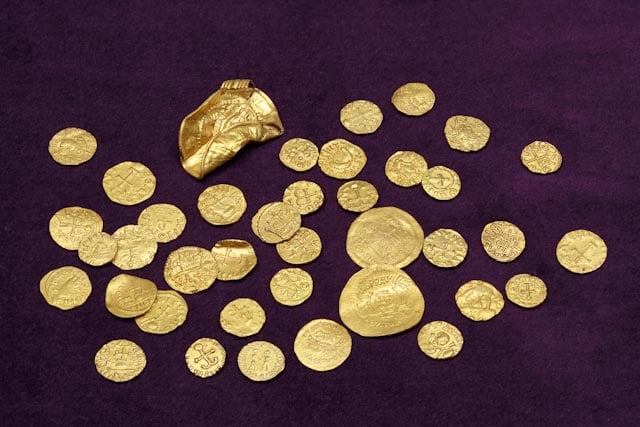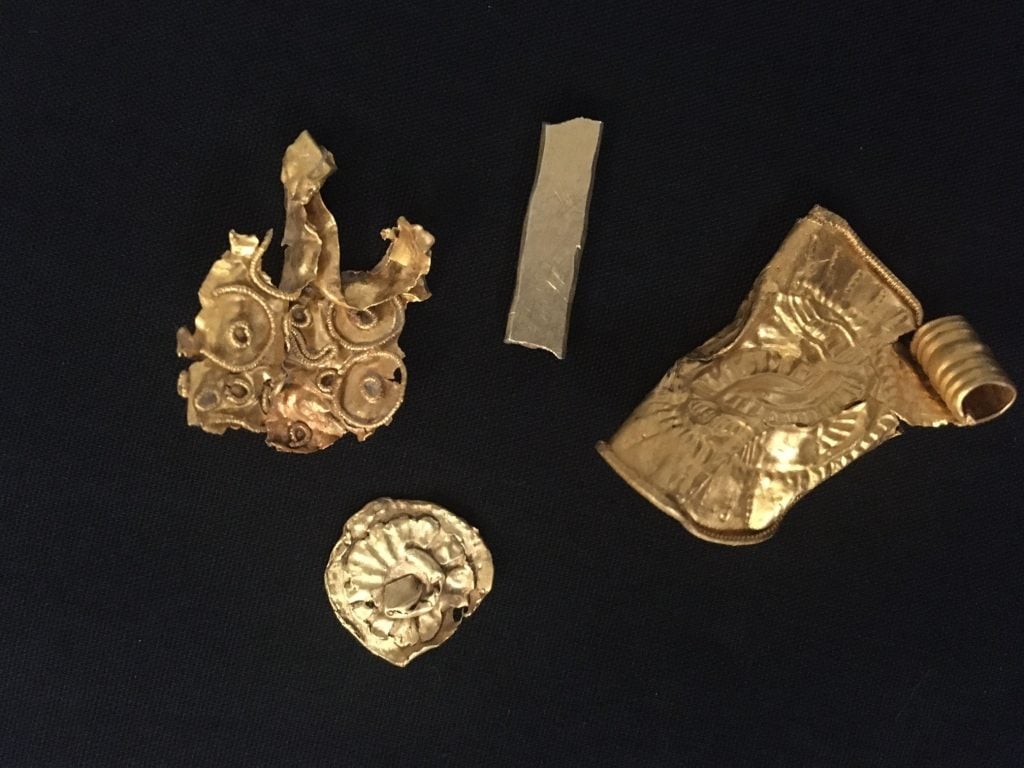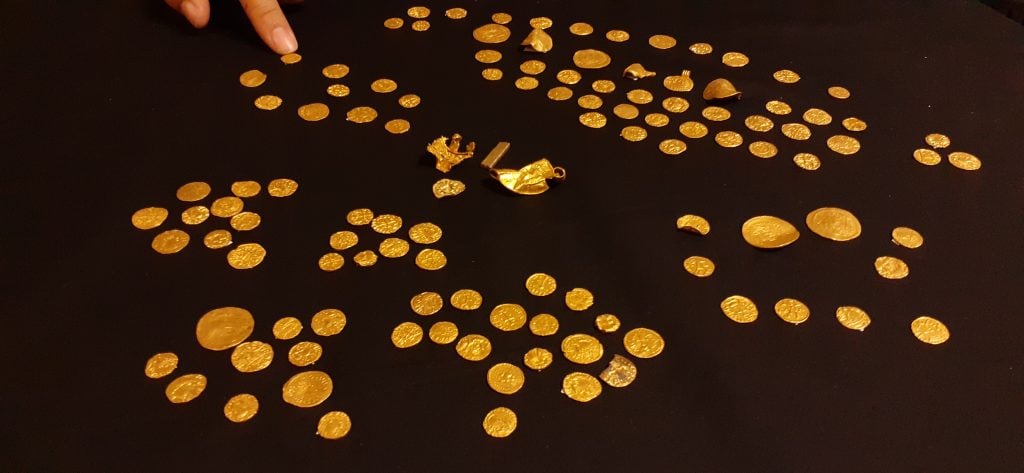Archaeology & History
A Metal Detectorist Has Found What Is Now Declared the Largest-Ever Hoard of Gold Anglo-Saxon Coins in His Backyard
The Crown is determining whether the trove is legally considered treasure.

The Crown is determining whether the trove is legally considered treasure.

One man, in one field, has amassed what is now being declared the largest-ever haul of Anglo-Saxon gold coins. The metal detectorist, who wishes to remain anonymous, discovered the 131 coins over the course of 30 years on his own land, finding a few at a time until he gradually built up what is now considered the largest trove ever found.
The East Norfolk-based man first found a coin around 1990, but most of the treasure was discovered between 2014 and 2020. Classed as bullion, the find is made up of mostly Frankish tremisses dating from 580 A.D. to 630 A.D. and contains nine Roman gold solidi, a larger coin worth three tremisses, a gold pendant, two pieces of gold, a small gold bar, and smaller parts of what are believed to be items of jewelry.

Items of gold discovered. Courtesy Norfolk Castle Museum
In a strange twist, an ex-policeman found 10 coins in the same field, tried to pass them off as several different finds to sell them, but was busted in 2017. He was fired from the police and sentenced to 16 months in prison.
“This internationally significant find reflects the wealth and Continental connections enjoyed by the early Kingdom of East Anglia,” said Tim Pestell, senior curator of archaeology at Norwich Castle Museum and Art Gallery. “Study of the hoard and its findspot has the potential to unlock our understanding of early trade and exchange systems and the importance of west Norfolk to East Anglia’s ruling kings in the seventh century.”

The hoard of gold. Courtesy Norfolk Castle Museum
The fate of the hoard currently hangs in the balance as the local coroner is deciding whether the items can be designated as treasure, which must be over 300 years old and made up of more than 10 percent precious metals. If this is the case, it belongs to the Crown, which will claim the find before selling it to Norwich Castle Museum with the support of the British Museum.
The find rivals the most famous East Anglian discovery from the same period Sutton Hoo in neighboring Suffolk, which contained a larger amount of gold but fewer coins. It also confirms that while coins were not yet being minted in the area, currency from elsewhere was being used.
“This is a hugely important find,” said early medieval coins curator at the British Museum Gareth William. “It is the largest coin hoard of the period known to date. It must be seen alongside other recent finds from East Anglia and elsewhere and will help to transform our understanding of the economy of early Anglo-Saxon England.”